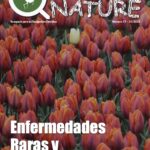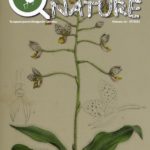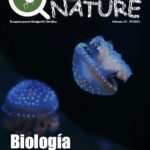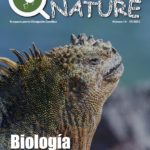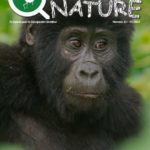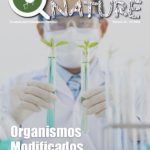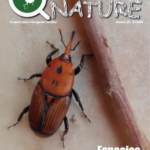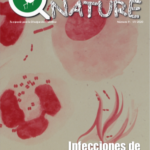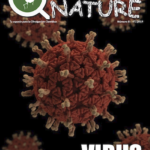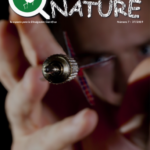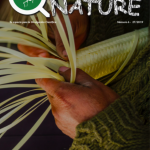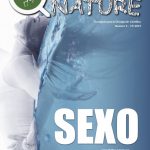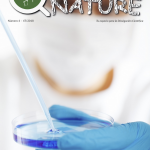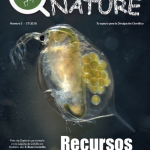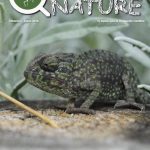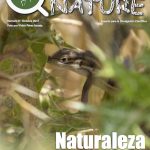Evolución biológica y enfermedades: una perspectiva en tiempos de pandemia
- GREENE, L.S. (1993) G3PD deficiency as protection against falciparum malaria: an epidemiologic critique of population and experimental studies. Yearbook of Physical Anthropoligy, 36. pp:153-178. | doi: 10.1002/ajpa.1330360609
- WELLS, H.L.; LETKO, M; LASSO, G.; … & ANTHONY, S.J. (2021) The evolutionary history of ACE2 usage within the coronavirus subgenus Sarbecovirus. Virus evolution, veab007 | DOI: 10.1093/ve/veab007
- LEONARDI, M.; GERBAULT, P.; THOMAS, M.G.; BURGER, J. (2012) The evolution of lactase persistence in Europe. A synthesis of archaeological and genetic evidence, 22(2) pp:88-97 | https://doi.org/10.1016/j.idairyj.2011.10.010
- BROWN, T.A. (2008) Genomas (3ª ed.). Médica Panamericana, Buenos Aires
Stephen Jay Gould y el equilibrio puntuado de la evolución
- Eldredge N, Gould SJ (1972) Punctuated equilibria: an alternative to phyletic gradualism. In: Schopf TJM (ed) Models in paleobiology. Freeman, Cooper and Co., San Francisco, pp 82–115. https://www.jstor.org/stable/2400177
- Eldredge N. (2013) Stephen J. Gould in the 1960s and 1970s, and the Origin of “Punctuated Equilibria”. In: Danieli G., Minelli A., Pievani T. (eds) Stephen J. Gould: The Scientific Legacy. Springer, Milano. https://doi.org/10.1007/978-88-470-5424-0_1
- Gould SJ, Eldredge N (1977) Punctuated equilibria: the tempo and mode of evolution reconsidered. Paleobiology 3:115–151. https://www.jstor.org/stable/2400177
- Gould, SJ (1989). Wonderful life: the Burgess Shale and the nature of history. New York, W. W. Norton & Company.
- Morrison, David A. “Stephen Jay Gould: Reflections on His View of Life.” (2009): 657-658. https://doi.org/10.1093/sysbio/syp070
- Simpson, George Gaylord. Tempo and mode in evolution. No. 15. Columbia University Press, 1944.
- Wright, Sewall. “Tempo and mode in evolution: a critical review.” Ecology 26.4 (1945): 415-419.
PreguntasHN: Convergencia evolutiva: cuando dos especies no emparentadas llegan a la misma solución
- Eirín-López, J.M. (2012). A propósito de la evolución: te da alas… y aletas. Investigación y ciencia. Recuperado de: https://www.investigacionyciencia.es/blogs/medicina-y-biologia/28/posts/te-da-alas-y-aletas-10578
- Fontdevila, A., Moya, A. (2003). Evolución: Origen, adaptación y divergencia de las especies. Madrid: Editorial Síntesis.
- Kazandjian, T. D., Petras, D., Robinson, S. D., van Thiel, J., Greene, H. W., Arbuckle, K., Barlow, A., Carter, D. A., Wouters, R. M., Whiteley, G., Wagstaff, S. C., Arias, A. S., Albulescu, L.‐, von Plettenberg Laing, A., Hall, C., Heap, A., Penrhyn‐Lowe, S., McCabe, C. V., Ainsworth, S., … Casewell, N. R. (2021). Convergent evolution of pain‐inducing defensive venom components in spitting cobras. Science, 22 (371), 386-390.
- Pomareda, F. (2021). Revista Science publica investigación sobre cobras escupidoras en la que participó la UCR. Semanario Universidad. Recuperado de: https://semanariouniversidad.com/investigacion/revista-science-publica-investigacion-sobre-cobras-escupidoras-en-la-que-participo-la-ucr/
- (2017). Cómo se adaptan al medio los pinzones de Darwin. Agencia Sinc. Recuperado de: https://www.agenciasinc.es/Noticias/Como-se-adaptan-al-medio-los-pinzones-de-Darwin
Hidropolinización en plantas acuáticas
- Cox, P. A. (1988). Hydrophilous pollination. Annual Review of Ecology and Systematics 19: 261-80.
- Cox, P. A. & Knox, R. B. (1989). Two-dimensional pollination in hydrophilus plants: Convergent evolution in the genera Halodule (Cymodoceaceae), Halophila (Hydrocharitaceae), Ruppia (Ruppiaceae) and Lepilaena (Zannichelliaceae). American Journal of Botany 76 (2): 164-75.
- Cox, P. A., Laushman, R. & Ruckelshaus, M. H. (1991). Surface and submarine pollination in the seagrass Zostera marina. Botanical Journal of the Linnean Society 109 (2): 281-91.
- Koopman, B. O. (1980). Search and Screening. Pergamon Press. 400 pp.
- AA. (1991). Pollen and spores: Patterns of diversification. Oxford University Press. 402 pp.
Cannabis sativa: Cromosomas sexuales y sexado mediante marcadores genéticos
- Radwan, M.M., Wanas, A.S., Chandra, S., & ElSohly, M.A. (2017). Natural cannabinoids of cannabis and methods of analysis. In Cannabis sativa l.-Botany and biotechnology (pp. 161-182). Springer, Cham..
- Gao, S., Wang, B., Xie, S., et al. (2020). A high-quality reference genome of wild Cannabis sativa. Horticulture research, 7(1), 1-11.
- Kovalchuk, I., Pellino, M., Rigault, P., et al. (2020). The genomics of Cannabis and its close relatives. Annual review of plant biology, 71.
- Prentout, D., Razumova, O., Henri, H., et al. (2020a) Development of genetic markers for sexing Cannabis sativa seedlings. bioRxiv 1–9. https://doi.org/10.1101/2020.05.25.114355
- Prentout, D., Razumova, O., Rhoné, B., et al. (2020b). An efficient RNA-seq-based segregation analysis identifies the sex chromosomes of Cannabis sativa. Genome research, 30(2), 164-172.
- Rahimi, M., Shokrpour, M., Salami, S.A., & Taheri, M.R. (2019). Morphological and molecular study of sex determination in Cannabis sativa L. Journal of Plant Physiology & Breeding, 9(1), 137-146.
- Toth, J. A., Stack, G.M., Cala, A.R., et al. (2020). Development and validation of genetic markers for sex and cannabinoid chemotype in Cannabis sativa L. Gcb Bioenergy, 12(3), 213-222
La constante e infinita carrera evolutiva entre especies
- Andrei Papkou et al. (2019). The genomic basis of Red Queen dynamics during rapid reciprocal host-pathogen coevolution. Proceedings of the National Academy of Sciences, 116: 923-928.
- Bush y Clayton (2018). Anti-parasite behaviour of birds. Philosophical Transactions of the Royal Society B, 373: 20170196.
- Christe et al. (1998). Immunocompetence and nestling survival in the house martin: the tasty chick hypothesis. Oikos, 83: 175-179.
- Garrido-Bautista et al. (2021). Whitin-brood body size and immunological differences in blue tit nestlings relative to ectoparasitism. Journal of Avian Biology: en prensa.
- Magrath (1990). Hatching asynchrony in altricial birds. Biological Reviews, 65: 587-622.
- Van Valen (1977). The red queen. The American Naturalist, 111: 809-810.
Huellas de la evolución en el genoma humano
- GALAKTIONOV, V.G. (2004) Evolutionary development of the Immunoglobulin Superfamily. Biology Bulletin of the Russian Academy of Sciences, 31. pp: 101-111 | https://doi.org/10.1023/B:BIBU.0000022462.69487.a6
- CHEN, F-G.; LI, W-H. (2001) Genomic divergences between humans and other hominoids and the effective population size of the common ancestor of humans and chimpanzees. American Journal of Human Genetics, 68(2). pp: 444-456 | https://doi.org/10.1086/318206
- MEHMET, B. (1986) al-Jahiz and the rise of biological evolution. | doi:1501/ilhfak_0000000674
- BROWN, T.A. (2008) Genomas (3ª ed.). Médica Panamericana, Buenos Aires
En mundo de las solanáceas: la evolución del género Nicotiana
- Bombarely, A., H. G. Rosli, J. Vrebalov, P. Moffett, L. A. Mueller, & G. B. Martin (2012). A draft genome sequence of Nicotiana benthamiana to enhance molecular plant-microbe biology research. Molecular Plant-Microbe Interactions 25:1523-1530. https://doi.org/10.1094/MPMI-06-12-0148-TA
- Clarkson, J. J., Knapp, S., Garcia, V. F., Olmstead, R. G., Leitch, A. R., & Chase, M. W. (2004). Phylogenetic relationships in Nicotiana (Solanaceae) inferred from multiple plastid DNA regions. Molecular phylogenetics and evolution, 33(1), 75-90. https://doi.org/10.1016/j.ympev.2004.05.002
- Comai, L. (2005). The advantages and disadvantages of being polyploid. Nature reviews genetics, 6(11), 836-846. https://doi.org/10.1038/nrg1711
- Edwards, K. D., Fernandez-Pozo, N., Drake-Stowe, K., Humphry, M., Evans, A. D., Bombarely, A., … & Mueller, L. A. (2017). A reference genome for Nicotiana tabacum enables map-based cloning of homeologous loci implicated in nitrogen utilization efficiency. BMC genomics, 18(1), 1-14. https://doi.org/10.1186/s12864-017-3791-6
- Khamsi, R. (2020). If a coronavirus vaccine arrives, can the world make enough. Nature, 580(7805), 578-580. https://doi.org/10.1038/d41586-020-01063-8
- Kenton, A., Parokonny, A. S., Gleba, Y. Y., & Bennett, M. D. (1993). Characterization of the Nicotiana tabacum L. genome by molecular cytogenetics. Molecular and General Genetics MGG, 240(2), 159-169. https://doi.org/10.1007/BF00277053
- Lim, K. Y., Matyášek, R., Lichtenstein, C. P., & Leitch, A. R. (2000). Molecular cytogenetic analyses and phylogenetic studies in the Nicotiana section Tomentosae. Chromosoma, 109(4), 245-258. https://doi.org/10.1007/s004120000074
- Luo, S., Valencia, C. A., Zhang, J., Lee, N. C., Slone, J., Gui, B., … & Huang, T. (2018). Biparental inheritance of mitochondrial DNA in humans. Proceedings of the National Academy of Sciences, 115(51), 13039-13044. https://doi.org/10.1073/pnas.1810946115
- McCauley, D. E., Bailey, M. F., Sherman, N. A., & Darnell, M. Z. (2005). Evidence for paternal transmission and heteroplasmy in the mitochondrial genome of Silene vulgaris, a gynodioecious plant. Heredity, 95(1), 50-58. https://doi.org/10.1038/sj.hdy.6800676
- McCauley, D. E., Sundby, A. K., Bailey, M. F., & Welch, M. E. (2007). Inheritance of chloroplast DNA is not strictly maternal in Silene vulgaris (Caryophyllaceae): evidence from experimental crosses and natural populations. American Journal of Botany, 94(8), 1333-1337. https://doi.org/10.3732/ajb.94.8.1333
- Ohyama, Kanji; Fukuzawa, Hideya; Kohchi, Takayuki; Shirai, Hiromasa; Sano, Tohru; Sano, Satoshi; Umesono, Kazuhiko; Shiki, Yasuhiko; Takeuchi, Masayuki; Chang, Zhen; & Aota, Shin-ichi (1986). Chloroplast gene organization deduced from complete sequence of liverwort Marchantia polymorpha chloroplast DNA. Nature. 322(6079): 572–574. https://doi.org/10.1038/322572a0
- Imagen 1. Fuente: www.jardineriaon.com
- Imagen 2. Fuente: Nuevas funciones en la nutrición de cloruro como macronutriente beneficioso para las plantas superiores. (2021) Tesis de Juan de Dios Franco-Navarro. Universidad de Sevilla (draft).
- Imagen 3. Fuente: Lim, K. Y., Matyášek, R., Lichtenstein, C. P., & Leitch, A. R. (2000). Molecular cytogenetic analyses and phylogenetic studies in the Nicotiana section Tomentosae. Chromosoma, 109(4), 245-258. https://doi.org/10.1007/s004120000074
- Imagen 4. Fuente: http://cyanophora.rutgers.edu/cyanophora/description.php

